Posts: 2,724
Threads: 160
Joined: Dec 2008
I am new to using foam on a layout and have learned a few things along the way. First the tools you need are pretty simple. About the only special tool you need is a Surform tool , but even then a heavy rasp may work just as well.
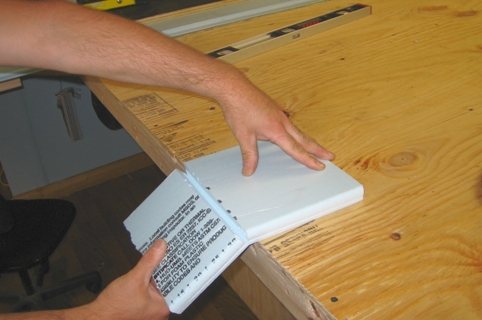
I am using 1 inch foam for my layout it can be cut by scoring and snapping like styrene.
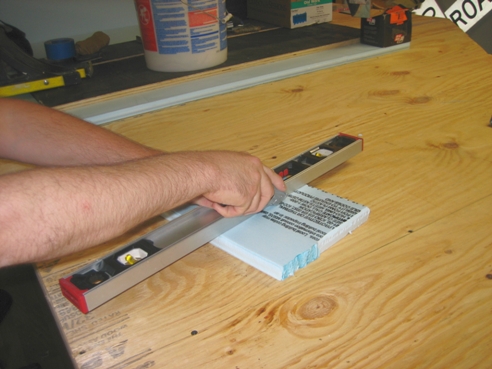
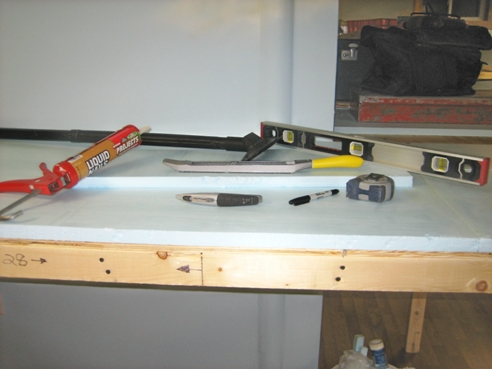
It can also be cut with a hot knife, but that makes a lot of very stinky smoke that probably is not to good for you. "I try to avoid it."
My other car is a locomotive, ARHS restoration crew
Posts: 2,724
Threads: 160
Joined: Dec 2008
I wrapped a hack saw blade with some electrical tape and used it to trim up some pieces, That worked pretty well also...

Liquid nails works well to hold it all together, just keep plenty of weight on it over night.
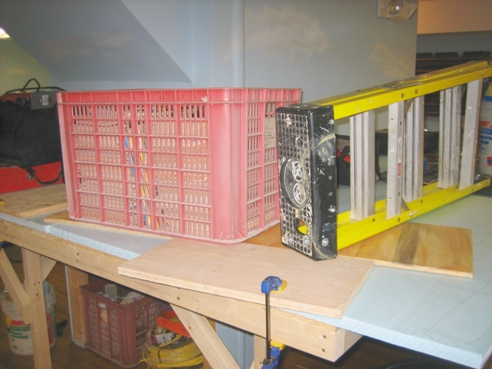
The Surform tool is used to level off the high spots and smooth out some rough parts. It's a great tool for the job, just use light pressure for the best results.
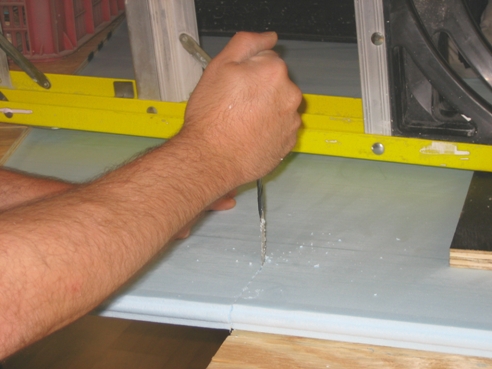
My other car is a locomotive, ARHS restoration crew
Posts: 2,724
Threads: 160
Joined: Dec 2008
You're going to want to go over the aria with a shop vac, This stuff gets every where.
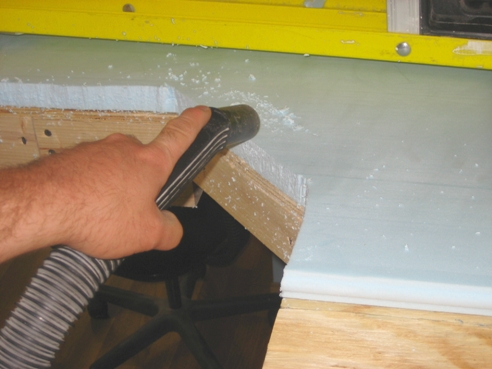
My other car is a locomotive, ARHS restoration crew
Posts: 1,333
Threads: 175
Joined: Dec 2008
This is interesting. I was just working with some foam tonight, trying to expand my 3x4' layout into a 3x5 layout. I just glued a 3' long by 11" wide piece of foam onto the existing layout. My foam is the thick kind, about 2" thick. I used Guerilla Glue.
Do you have any idea how long I should allow for the glue to work? I'm thinking of letting it dry overnight.
Thanks,
Rob
Rob
<!-- m --><a class="postlink" href="http://www.robertrobotham.ca/">http://www.robertrobotham.ca/</a><!-- m -->
Posts: 2,724
Threads: 160
Joined: Dec 2008
overnight should be fine..
My other car is a locomotive, ARHS restoration crew
Posts: 989
Threads: 55
Joined: Dec 2008
I would suggest allowing the Gorilla Glue to dry overnight before putting any serious pressure on it. I've found it takes a few hours for the glue to set and mix with the small amount of water needed to start the reaction. It would probably be ok to handle after an hour or so...but the more time you give it the better from what I've found. Liquid Nails for Projects is also a good choice...and that stuff bonds fast and strong.
Mark
Citation Latitude Captain
--and--
Lt Colonel, USAF (Retired)
Posts: 1,333
Threads: 175
Joined: Dec 2008
e-paw Wrote:overnight should be fine..
Thanks, e-paw and Herc Driver. That's basically what I'm doing. I'll let it dry overnight although it seems to be bonding well now, which is about 2 hours later.
Cheers, Rob
Rob
<!-- m --><a class="postlink" href="http://www.robertrobotham.ca/">http://www.robertrobotham.ca/</a><!-- m -->
Posts: 229
Threads: 7
Joined: Jan 2009
I use even simpler tools.
I glue it with full strength Home Hardware White Glue.
I cut it with an old large Henkel kitchen knife.
It can be seen in this picture between the mine and slab of trees.
![[Image: CVR-L056.jpg]](http://www.muskokacomputes.com/CVR/CVR-L056.jpg)
Note: I never use the white foam on the layout. I just use it for temporarily holding things.
Will Annand
CVR in N Scale
<!-- w --><a class="postlink" href="http://www.muskokacomputes.com/CVR-Home.html">www.muskokacomputes.com/CVR-Home.html</a><!-- w -->
Posts: 2,271
Threads: 155
Joined: Dec 2008
At the modular club <!-- m --><a class="postlink" href="http://www.hotrak.ca">http://www.hotrak.ca</a><!-- m --> we build with foam, as well as use it for landscaping like Will. We have had better success with the Gorilla Glue polyurethane-type adhesives than the white or (yellow) carpenters' PVA-type glues.
The reason for this is (as alluded to by Herc Driver) that the PVA-types require air exposure to cure, while the polyurethane ones need only a bit of moisture. So where the glue is sandwiched between layers of foam it will dry around the edges, impeding the centre from drying completely. The Gorilla Glue cures without air, so this is not a problem. In applications like Will's, where the benchwork is permanent and does not move, you can wait weeks for the glue to dry. With modules, you want to be able to pick them up and move them in short order - not a good idea if the glue is not dry...


One other advantage of the polyurethane glue is that it can be cut with the tools used on the foam itself. Sometimes the PVA glues will harden to the point where it is hard to cut through. One caveat for polyurethane - it will expand slightly, so be sure that your pieces are aligned properly before the glue sets completely...!
Lastly, a tool that I like to use for "carving" is a wire brush - just scrub away the bits of foam you do not want. Makes a heck of a mess, but since they are available in different sizes you can find one for almost every need.
Andrew
Posts: 276
Threads: 11
Joined: Dec 2008
Another handy tool for cutting foam is a dollar-store ever-sharp serrated knife. Works a little better at cutting than a regular knife, but is messier.

Posts: 1,333
Threads: 175
Joined: Dec 2008
I just use an all-purpose utility knife that I got from Home Depot. It works as if it were a large exacto knife. I basically score the board, then snap it. Rob
Rob
<!-- m --><a class="postlink" href="http://www.robertrobotham.ca/">http://www.robertrobotham.ca/</a><!-- m -->
Posts: 453
Threads: 59
Joined: Dec 2008
The foam is great to work i use a hacksaw blade for main cuts then a serrated vegetable knife or scalpel for more precise cutting out of the scenery a selection of files is handy as is the vaccum

and usually stick with liquid nails the WS trackbed attached with Copydex a latex based adhesive as cyano reacts with the foam giving of smoke and dangerous fumes.
Posts: 989
Threads: 55
Joined: Dec 2008
A utility knife works well...but I've found a carpet knife works better if you happen to have one around. The blade is slightly thinner and very, very sharp. Held at about a 30 or so degree angle from TDC, it will easily slice through foam board. It works best when cutting "with" the material and not across it, at a slow pace. The foam board tends to bunch up when you go too fast.
Mark
Citation Latitude Captain
--and--
Lt Colonel, USAF (Retired)






![[Image: CVR-L056.jpg]](http://www.muskokacomputes.com/CVR/CVR-L056.jpg)



![[Image: up_xm40o.gif]](http://i549.photobucket.com/albums/ii377/upnick/up_xm40o.gif)
![[Image: up_lo-1.gif]](http://i549.photobucket.com/albums/ii377/upnick/up_lo-1.gif)
![[Image: up_turb10k_r.gif]](http://i549.photobucket.com/albums/ii377/upnick/up_turb10k_r.gif)